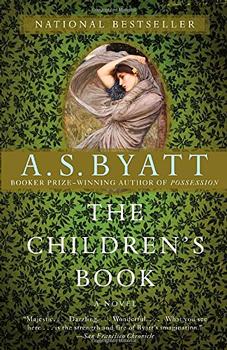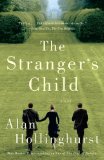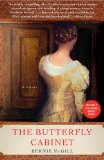Summary | Excerpt | Reading Guide | Reviews | Beyond the book | Read-Alikes | Genres & Themes | Author Bio

A Novel
by A.S. ByattA spellbinding novel that spans the Victorian era through the World War I years, and centers around a famous children's book author and the passions, betrayals, and secrets that tear apart the people she loves.
A spellbinding novel, at once sweeping and intimate, from the Booker Prize–winning author of Possession, that spans the Victorian era through the World War I years, and centers around a famous children's book author and the passions, betrayals, and secrets that tear apart the people she loves.
When Olive Wellwood's oldest son discovers a runaway named Philip sketching in the basement of the new Victoria and Albert Museum—a talented working-class boy who could be a character out of one of Olive's magical tales—she takes him into the storybook world of her family and friends.
But the joyful bacchanals Olive hosts at her rambling country house—and the separate, private books she writes for each of her seven children—conceal more treachery and darkness than Philip has ever imagined. As these lives—of adults and children alike—unfold, lies are revealed, hearts are broken, and the damaging truth about the Wellwoods slowly emerges. But their personal struggles, their hidden desires, will soon be eclipsed by far greater forces, as the tides turn across Europe and a golden era comes to an end.
Taking us from the cliff-lined shores of England to Paris, Munich, and the trenches of the Somme, The Children's Book is a deeply affecting story of a singular family, played out against the great, rippling tides of the day. It is a masterly literary achievement by one of our most essential writers.
When I first plunged into The Children's Book, what struck me was how real the characters were. Olive Wellwood and her circle of friends and family didn't feel like characters, they felt like people. The expansive scope of this novel, and the attention to detail in so many areas - theater, pottery, fairy tales, anarchy, socialism and many others - is impressively handled and rarely does the history interfere with the storytelling. However, I was disappointed that the ending didn't come with a little more of the clarity and understanding I had enjoyed so much in the first part of the book...continued
Full Review
 (540 words)
(540 words)
(Reviewed by Beverly Melven).
One of the main characters in The Children's Book is Phillip Warren, apprentice to eccentric master of ceramics Benedict Fludd. While Fludd is a fictional creation, the kind of pottery being made in his house is in a style that came to be known, in the early 20th century, as Studio Pottery - that is to say pottery made by artists working alone or in small groups, producing unique items or small quantities of similar items.
In the wake of the industrialization of pottery in the previous centuries, those who created unique items from earthen- and stone-ware struggled to have their work accepted as art. Some of the leaders of the Studio Pottery tradition were William Staite Murray, Bernard Leach and Michael Cardew. Were Phillip Warren a ...

If you liked The Children's Book, try these:

by Alan Hollinghurst
Published 2012
A magnificent, century-spanning saga about a love triangle that spawns a myth, and a family mystery, across generations.

by Bernie McGill
Published 2012
Vivid, mysterious, and unforgettable, The Butterfly Cabinet is Bernie McGill's engrossing portrayal of the dark history that intertwines two lives - a haunting novel full of frightening silences and sorrowful absences that build toward an unexpected, chilling truth.